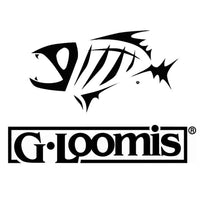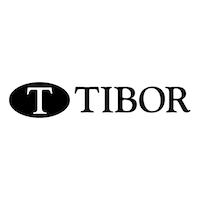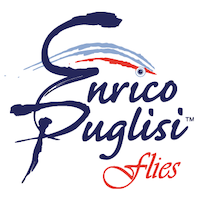Improving Your Fly Tying Skills
One thing all fly tyers have in common is that, whether you are a complete beginner or a seasoned expert, there is always room for improvement. Becoming a better fly tyer isn’t even all that difficult. All you need to do is continue tying, with an eye towards trying new things
If you are relatively new to fly tying, a good way to improve your skills is to tie established patterns, progressing from easier to more complex. Once you have mastered a pattern, find something a little different and learn to tie it. That something different may be a new skill, a new material, or a new way of using a material with which you are already familiar. As your knowledge and skills improve, flies that were once difficult will become easy and new possibilities will emerge.
Materials and Skills
 At their most basic level, flies are made up of materials attached to a hook. The factors determining what a fly will be are the specific materials used and how they are applied. The same materials can be used in many different ways to produce completely different results.
At their most basic level, flies are made up of materials attached to a hook. The factors determining what a fly will be are the specific materials used and how they are applied. The same materials can be used in many different ways to produce completely different results.
A thorough understanding of materials will improve your tying immensely. This begins with knowing the differences between materials and when to choose one over another. For example, while bucktail, deer belly hair and deer body hair all come from the same animal, they have unique characteristics and therefore different applications. As you learn more about a variety of materials, you will discover new ways to use them and will know when a different material may give you a better result.
Understanding materials involves not just knowing when to use a material in a fly but also how it behaves when tied in, how it will affect the castability of the fly and, most importantly, how it looks and behaves in the water. A full bodied fly, with a dubbing loop of rabbit substituted for hackle, may look great in the vise but be exceptionally sparse in the water. Adding a bit of hackle behind the rabbit, or possibly adding some coarse dubbing to the loop, may create just the impression and action you were looking for. Buoyancy, or lack thereof, stiffness, body when wet, water retention, and propensity to tangle are all factors to consider.
Materials can be applied to a hook in many different ways. Among the first fly tying skills learned are tying in materials directly in line with the hook and wrapping materials around the hook shank. Different materials require different handling but the underlying technique remains the same. Many very effective patterns can be tied with basic techniques but that is only the beginning and stopping here will shortchange your tying. Taking the time to learn to spin deer hair, tie synthetic baitfish, work with dubbing, use UV resin etc. is well worth the effort.
Try Something New
 The impetus for learning a new technique is often the desire to tie a new pattern. It might be something you pulled off the wall at your local shop or it could be a fly you used with a guide. You might have an idea for the perfect imitation of a particular baitfish you regularly see redfish attack. You do your best to tie the fly, but something is missing. With a little research, you find a technique you’ve never tried before that will allow you to create an appropriately large head without excessive bulk.
The impetus for learning a new technique is often the desire to tie a new pattern. It might be something you pulled off the wall at your local shop or it could be a fly you used with a guide. You might have an idea for the perfect imitation of a particular baitfish you regularly see redfish attack. You do your best to tie the fly, but something is missing. With a little research, you find a technique you’ve never tried before that will allow you to create an appropriately large head without excessive bulk.
An ideal way to learn new techniques is to watch someone else use them and then try them yourself. Try to use the same materials as the tyer you are learning from. Many times, what appears to be a failure in technique is actually a failure to use the right material or the right grade of material. You can always use something different after you have learned the technique. Watching someone in person, with the ability to ask questions, is an ideal situation but these days online video instruction is the most popular learning method. One definite benefit of a video is that you can rewind and re-watch as many times as you want. And if you find one video difficult to understand, you can always try another.
Once you are comfortable with a technique, see what happens when you change things slightly. Try a different material. Think about how you might use the technique on a different pattern.
The Tools of the Trade
 Your fingers are by far your most useful tools when tying flies. Along with your vise and a few basic tools, such as a bobbin, bodkin and scissors, they’re all you absolutely need to tie a great many flies. Having some additional tools and accessories, however, will make your fly tying more enjoyable and more productive, and will open up techniques that are very difficult without specialized tools.
Your fingers are by far your most useful tools when tying flies. Along with your vise and a few basic tools, such as a bobbin, bodkin and scissors, they’re all you absolutely need to tie a great many flies. Having some additional tools and accessories, however, will make your fly tying more enjoyable and more productive, and will open up techniques that are very difficult without specialized tools.
[Modify to fit what is currently available on the site]
A number of tools exist for simplifying moderately difficult tasks and making the very difficult ones manageable. A description of many of the options available can be found on our Fly Tying Glossary page. A few tools you should consider, along with some accessories that will help you stay organized, are:
- Desktop tying organizer – To hold your most often used tools and to keep your head cement from spilling.
- Hook and bead boxes – Get boxes appropriately sized for what you are putting in them. Make sure the lids close securely enough that items won’t “float” from one compartment to the next.
- Vise mounted trash Bag – Very helpful for keeping you tying area clean.
- De-barb pliers with cutter - For cutting bead chain, wire and monofilament as well as de-barbing hooks and flattening monofilament for weed guards.
- Curved Scissors – Great for trimming a synthetic baitfish body to shape.
- Hair Comb – Used to clean the underfur out of deer hair and other natural hairs. Also helpful for blending, straightening and untangling synthetic fibers.
- Finger Brush – Can be used to blend, straighten and untangle synthetic fibers. Extremely helpful when tying with dubbing brushes.
- Dubbing spinner – Used for applying dubbing to thread and to form brushes
- Material Clips – Used for holding onto materials so they can be placed into a dubbing loop and formed into a brush.
- Tying light – Great to have if your tying area needs some additional light.
- Magnifier – Very helpful if you tie small flies or if your eyes aren’t what they used to be.
Tying Better Flies
 Flies are tied in order to attract the attention of fish that spend their time in a changing environment. For these reasons and more static perfection in a fly often doesn't exist. The ability to make incremental changes to a fly pattern allow us to craft a better fly that the fish we're after are more likely to eat.
Flies are tied in order to attract the attention of fish that spend their time in a changing environment. For these reasons and more static perfection in a fly often doesn't exist. The ability to make incremental changes to a fly pattern allow us to craft a better fly that the fish we're after are more likely to eat.
The word “better,” in this case, is very subjective. You may have different goals but better, to me, means tying a fly that is as simple as it can be yet maintains its effectiveness. I like my flies to be durable as well but will sometimes trade durability for action if a fly is quick and easy to tie. If you have different goals, for example to make your flies as lifelike as possible, then do your best to meet your goals. Part of the reason we tie our own flies is so we can tie what we want.
Know Your Audience
Many flies available in fly shops are tied as much for anglers as for fish. If you want to tie a crab pattern with perfect claws, a mottled carapace and the correct number of jointed legs, then go right ahead. Just be aware that the fish may be more likely to eat a much simpler fly that suggests the general shape and movement of a crab. The time you save by tying the simpler pattern will let you tie more flies or spend a more time on the water.
Pay attention to what fish eat. Over time you’ll see patterns you can exploit. Try both realistic and more suggestive patterns. See if adding materials that dance and move in the water helps entice strikes. Try different weights on sinking flies. And, of course, try different colors. If you have a particularly effective pattern of a particular type, for example a shrimp pattern for redfish, see if there are any elements of that fly that it would make sense to use in a baitfish or possibly a crab fly.
Get Out of the Box
Many patterns, materials and techniques are associated with a specific type of fly fishing. Don’t be afraid to borrow what you want and use it elsewhere. Dubbing and brass beads are typically considered “trout fly materials.” I can tell you from experience that they can form important components of flies for redfish, snook, and largemouth bass. Borrowing trout, steelhead, and salmon fly techniques for saltwater flies, and vice-versa, will open up possibilities. And you’ll probably be throwing something completely different than the fish you’re targeting are used to seeing.
Likewise, try using materials in different ways. Craft fur is most often tied in with the tips pointing back, parallel to the fly, as a tail or wing. It can also be reverse-tied for a simple baitfish, spun for a head, and used for dubbing.
On the Water Testing
A fly that looks great in the vise may not work out quite so well when it hits the water. The true test of a fly is what happens when you tie it to the end of your leader and launch it into the water. Does it sink with the right orientation? What happens when you strip it? Does it move the way you want it to? Does the tail foul when you cast? And, most importantly, do the fish want to eat it?
Take your flies fishing and make note of anything you think should be changed. Hopefully a problem fly will just need a tweak here or there. If the necessary modification is more extreme, for example, fixing a baitfish pattern that rides sideways, you’ll have a bit more design work to do. Often the simplest way to approach a more extreme modification is to find a fly that works the way you want and borrow the elements that make it successful. Some flies take more time and effort to get right than others, but the end result is usually worth that extra effort.
Tying flies will make you a better tyer. If you tie regularly and push yourself to learn new skills you will eventually get to the point where you can look at a fly, know what materials it uses, and understand how to put it together. You’ll be able to copy flies with relative ease, making whatever modifications you want. You will also be able to design patterns of your own. In short, you’ll be able to use your own flies, tied exactly as you want, to catch fish.














